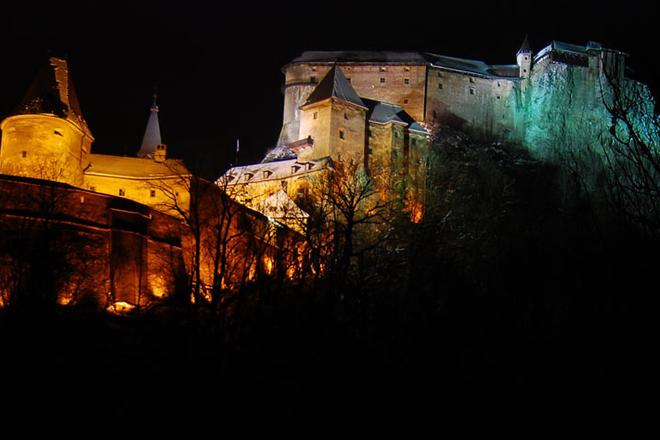THE DOMINANT feature of the Orava region, its twelfth-century castle, is now visible at night. On December 6 a new set of lights were ceremonially switched on for the first time. In total, 83 lights of various intensities and colours, of which 43 are positioned inside the castle and 40 illuminate the fortress from outside, have been installed. The lighting scheme comprises three systems, regulated separately, whose variability will allow the castle to be lit in a range of different ways, the SITA newswire wrote.
Orava, which is the second-most-visited castle in Slovakia, now joins other prominent European monuments such as the Coliseum in Rome, the Brandenburg Gate in Berlin, the Presidential Palace in Warsaw and Prague Castle which benefit from the latest lighting schemes.
“[The lights] support tourism which, in economic terms, is a sustainable part of the economy that cannot be shaken by any crises that might occur in Europe or in the wider world,” Juraj Blanár, the president of the Žilina Self-governing Region, told the Nový Čas daily. The cost was Sk4.75 million (€157,670), of which Sk1.5 million (€49,790) was donated by electricity producer Slovenské Elektrárne, who changed the existing, worn-out lighting at the castle; the remaining cost was met by Žilina Region.
The new lighting at Orava Castle is more economical than the old. Anticipated electricity consumption at full capacity should be Sk150,000 (€4,979) per year.
The illuminated castle should attract more visitors, which would also mean higher income. There will be six lights in the entrance courtyard, seven lights on the main terrace, one light at the glorieta, nine lights on the main courtyard, four on the tower of the church, eight for the inner illumination of the little tower of the western bastion and another eight on the roof of the Dubovský palace. There will also be 40 lights on the 310-metre long fortification wall, producing white, yellow and a so-called neutral light.
More than 180,000 people visit Orava Castle each year. It is the second castle in Žilina Region (after Strečno) to be lit up at night.
According to Blanár, there are also plans to install lights at Budatín Castle, in Žilina.
“Apart from the usual repairs and maintenance of cultural monuments, which require a lot of financial resources, illumination is merely an extension of [our goal of] making visible the values that were left to us by our ancestors. We want future generations to be inspired by them too,” Blanár said.



 Orava Castle has had a lighting upgrade. (source: SITA)
Orava Castle has had a lighting upgrade. (source: SITA)